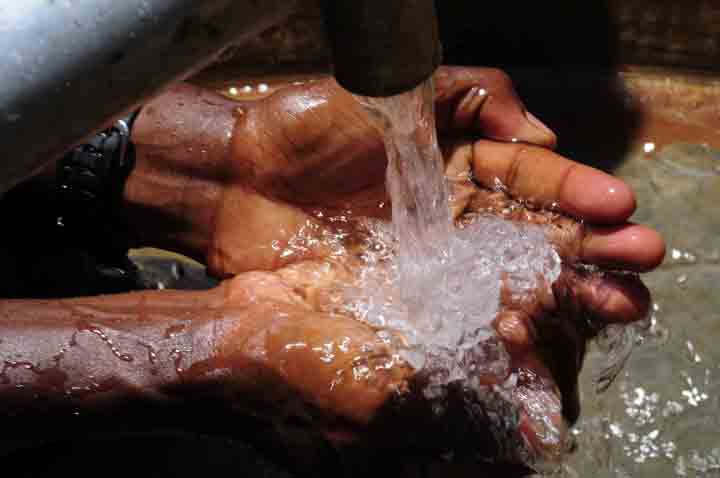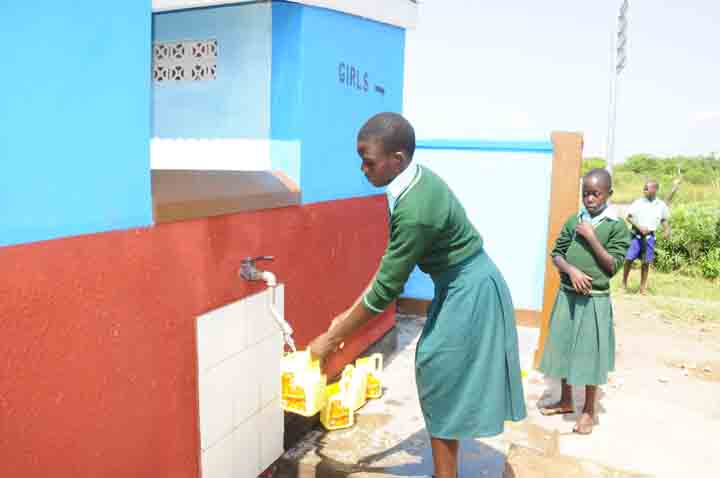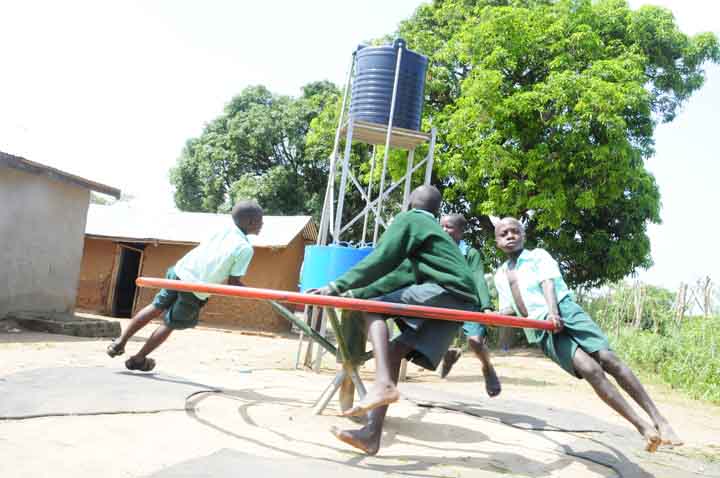Providing water is a powerful tool that transforms communities, it still only solves some of the issues.
To make sure that people stay healthy you also have to address sanitation. It starts with teaching children about the importance of washing their hands before they eat, and this happens while we are at the school building the well, but that is only the start. These messages of good health practices also need to be passed on to the adults.

Of course there are other issues, open defecation is one of the big ones, so DROP has designed and developed a bio-digestion toilet that treats waste rather than just storing it. These toilets never fill up, do not require electricity and do not need to be connected to a sewer grid. They do not attract flies (one of the common ways diseases are spread) and the toilets never fill up or need to be emptied.
We also noticed that many girls were dropping out of school once they hit puberty, and although there are many reasons this happens, one that has a simple solution was that many girls didn’t have an effective way to manage their monthly menstrual cycle. After hiring a seamstress and buying a number of sewing machines we created an initiative where we taught students how to make washable, reusable sanitary pads out of locally available materials. This made it possible for girls to be in school every day instead of missing several days every month.
Hand washing with soap is one of the most effective ways to reduce the spread of many common diseases. But what happens when your water source is a well?

Toilets can never be placed too close to a working well because the risk of groundwater contamination would be a huge issue. But obviously people need to be able to wash their hands after using the bathroom. This raises the question: even if people are aware of the importance of hand washing, will they be as willing to wash their hands after using the bathroom if the hand washing area is far away?
We needed a solution that could place a water source next to the toilets with a replenishing supply of clean water. The problems we were facing were: no piped water, no electricity, and something that did not require expensive fuel that would need to be constantly replaced by the school.

The answer was right in front of us, kid power. By harnessing the energy of children playing, we were able to create a roundabout pump that worked in conjunction with the existing hand pump on the well (however, if there is ever a problem with the roundabout pump, the community is still able to get water from the well).
When rotated by kids doing what they do best, having fun, the roundabout pump moves water from the underground reservoir tank over to the water tower and the hand washing station next to the toilets. Because the toilets are a good distance away from the well there is no risk of groundwater contamination. Problem solved, though don’t tell the kids they are doing more than just having fun.
